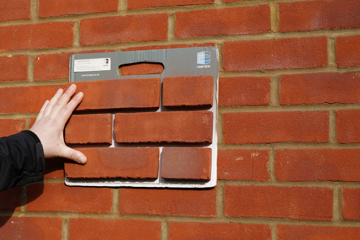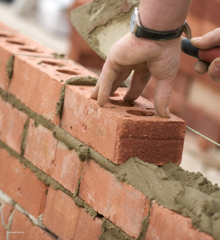Porotherm Blocks: A Guide
On any construction site, time is money. So it’s not surprising that we’re constantly on the lookout for ways to save time, and money, on-site.
Porotherm is an innovative clay block walling system that is becoming increasingly popular in the UK. But what is porotherm and what are its benefits?
What is Porotherm?
Porotherm is a modern clay block structural walling system, which applies an innovative approach to traditional clay material, to deliver versatile, high performance and sustainable results.
Porotherm clay bricks are manufactured from natural clay, coal, ash, rice husk, and granite slurry. Available in a range of sizes, the blocks are perforated horizontally or vertically. This perforation provides an excellent walling system, facilitating highly efficient thermal insulation that keeps interiors cool in the summer and warm in the winter.
These innovative bricks are easy to use, environmentally friendly, and versatile. They are low weight, strong, durable, and can be used for both load-bearing and non-load-bearing walls.
What are the benefits of Porotherm blocks?
Fast
Building with porotherm blocks is super fast! In fact, the laying speed is up to five times the speed of traditional masonry.
But what makes laying porotherm blocks so much faster? These bricks have an interlocking designer, which means mortar isn’t needed in the vertical joints and only 1mm is needed for bed joints. As a result, it’s easy to lay 30-40m2 per day, compared to 12-15m2, which is the average for traditional masonry.
Efficient
Porotherm blocks are thermally efficient, helping to regulate variations in temperature. They are also acoustically efficient, breathable, and offer outstanding fire resistance.
Strong
Porotherm’s core range typically has a compression strength of 10 N/mm2. This is higher than standard concrete blocks, which are usually around 7 N/mm2.
Safe
Because porotherm blocks are typically lighter than concrete blocks, construction teams can work quickly without the risk of repetitive strain injuries.
Thanks to the precision engineering used in the manufacturing process, these bricks are also free from sharp corners, reducing the risk of cuts and other injuries, while the use of a roller to apply the ZeroPlus mortar reduces the risk of any dermatological issues.
The system is certified to BS EN 771-1, CE marked, accepted by the NHBC and other insurance providers, and holds LABC registration.
Dry
Porotherm blocks use 95% less water than traditional masonry, meaning it takes less time to achieve a watertight shell. Not only this, but it also means that construction work is less reliant on the local water supply.
Sustainable
Clay has been used for thousands of years and is one of the most sustainable materials available for modern buildings.
30% of the materials used to produce porotherm bricks are from alternative, recycled, or secondary sources and, once produced, each block has a life expectancy of more than 150 years with little or no maintenance required. And, when they do reach the end of their useful life, the blocks can be recycled.
Applications of Porotherm bricks
Porotherm bricks can be used in a range of applications, including:
- Load-bearing walls
- Non-load bearing walls
- Partition walls
- Infill panels with framed structures
- Single leaf or monolithic internal and external walls
- The inner leaf of brick-faced cavity walls
- Inner and outer leaves of rendered cavity walls.
Porotherm blocks vs concrete blocks
How do porotherm blocks compare to traditional concrete blocks? Let’s take a look at how they match up across a number of different factors:
| Porotherm Blocks | Concrete Blocks | |
|---|---|---|
| Laying Speed | 30-40m2 per worker, per day. | 12-15m2 per worker, per day. |
| Mortar | Once applied to the blocks, the bed joint mortar starts to set in just 30 minutes, with full strength reached within 24 hours. | Once the wet bed joints are laid, the mortar is slower to set and takes around 48 hours to reach full strength. |
| Safety | Lighter, with no sharp corners. | Blocks are heavier and have sharp corners. |
| Strength | The core range typically has a compression strength of 10 N/mm2. | Blocks are dense and manufactured to a range of compressive strengths, usually around 7 N/mm2. |
| Waste | Minimal mortar waste and 2% block wastage, on average. | An average of 40% mortar waster and 15% block waste. |
| Efficiency | High thermal efficiency. | Lower thermal efficiency. |
Find out more
If you need any advice on using porotherm blocks in your next project, we can help. Get in touch with our team – we’re ready and waiting to help!





